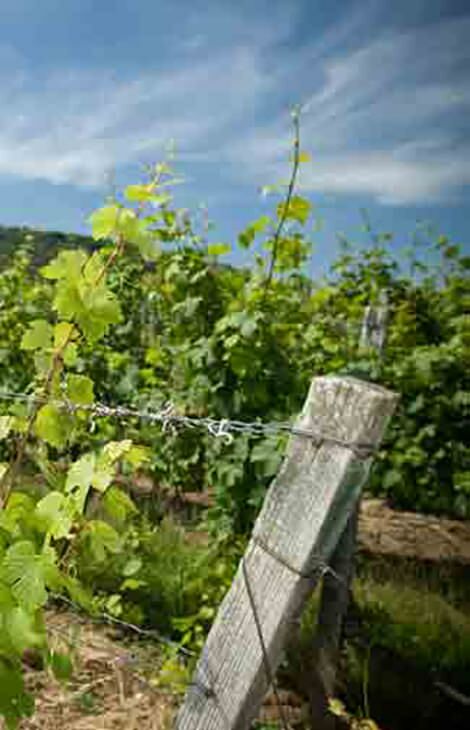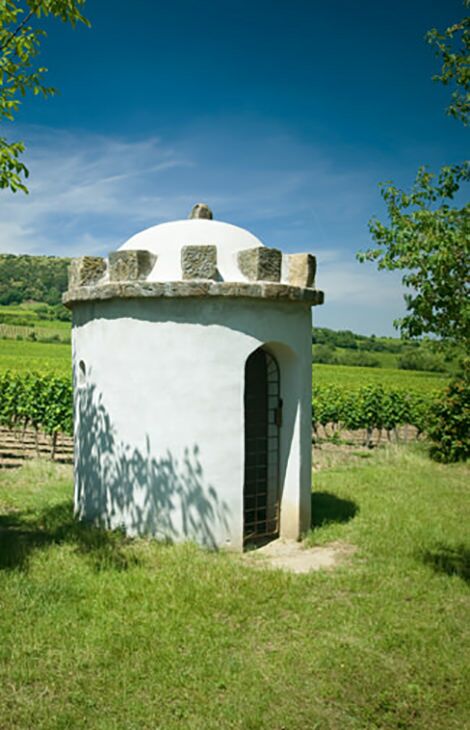
erstelage
Forster Musenhang
This 8.6 ha site runs along the edge of the Palatinate Forest. Cool air flows nightly from the woods, extending the ripening period for the grapes and boosting aromatic development. The wines show a somewhat austere style, racy and concentrated with a marked minerality. The soil is clayey sand and limestone scree.

grosselage
Forster Pechstein
Some 53 million years ago, magma rose just above here from cracks and fissures in the crust of the earth. The head of the 15-hectare Pechstein vineyard contains remnants of this as cooled basalt stone. The distinctive characteristics of the soil and microclimate lend wines grown here an extraordinary minerality. The wines are delicate and elegant, with exceptional length and depth. Typical aromas include lemon, quince and flint.

grosselage
Forster Ungeheuer
The vineyard site was first mentioned in official documents in 1470, as the "an dem Ungehuwern." In the parlance of the time, this referred to the "unsettled and unsettling" nature of this area west of Forst. Parcels in the center of the hillside are protected from westerly winds and exhibit an extremely diverse range of soils. The western border of the vineyard is formed by a shell limestone riff from primordial times. And the vineyards around it have a correspondingly high share of limestone.

grosselage
Forster Jesuitengarten
This roughly 7-hectare site at the edge of town dips slightly to the east and was once owned by various Jesuit cloisters. The Royal Bavarian Site Classification survey of 1828 evaluated the Jesuitengarten as the second-finest vineyard in the entire Pfalz, behind only the Kirchenstück. Its soils are comprised of sandstone scree, sandy clay and basalt, with the dense layers of clay and sand ensuring an optimal supply of water and minerals.

grosselage
Forster Kirchenstück
This site covers 3.7 hectares and, as its name implies, lies directly behind Forst's church. Situated at the edge of the village, it enjoys its own special microclimate. The soils here are sandstone scree, sandy clay and basalt, and it is cultivated strictly with Riesling. Its wines are known for their complexity, with a true potpourri of aromas and notable juiciness, minerality and longevity. In the 1828 Royal Bavarian Site Classification survey, the Forster Kirchenstück scored as the finest vineyard in the Pfalz and Bavaria, earning 65 of 65 points. Even today, the wines from this site enjoy a true cult status among critics and Riesling connoisseurs.

grosselage
Forster Freundstück
Forster Freundstück serves as the de facto 'house vineyard' for Weingut Heinrich Spindler. Our parcel at the heart of the vineyard directly abuts the estate. The smallest of the Forst single sites drops slightly toward the south, with soil of weathered colored sandstone scree and with a portion of shell limestone in some sections. Placed in the immediate vicinity of the village, this site produces wines of exceptional ripeness and delicate fruity elegance. Thomas Mann described the wines from Forster Freundstück as delightful Pfälzer!

erstelage
Forster Elster
It would be easy to surmise that the German name is suggestive of a magpie, the modern meaning of 'Elster,' yet it actually refers to an old term for the border of a settlement. The vineyards of Forster Elster are slightly hilly and form the southern edge of the Deidesheim vineyards. The soils are colored sandstone scree and clayey sand. And lend themselves to wines with beautiful fruit and a balanced acidity.

erstelage
Deidesheimer Herrgottsacker
This site spans across 125 hectares, yet only the best portion above the German Wine Road is classified as an ERSTE LAGE. Marked by a light colored sandstone, the soils warm quickly with clayey layers in the subsoil that provide very strong water supply. The Rieslings often show yellow fruit aromas, finesse and a marked minerality.

